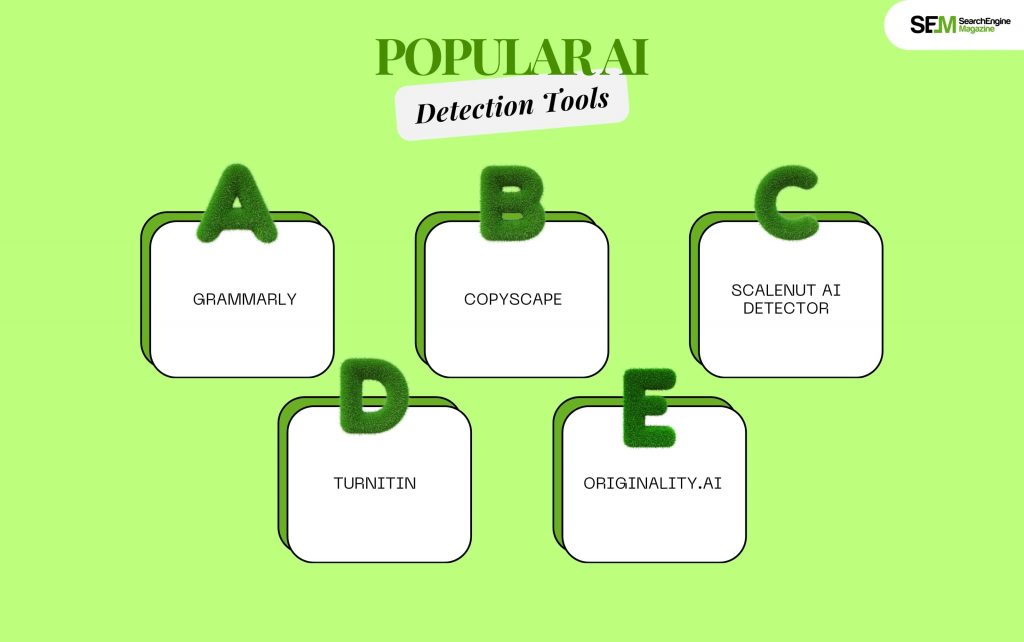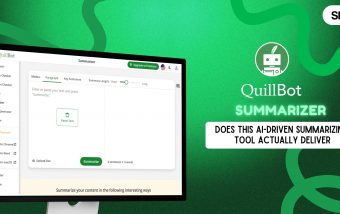White Label Link Building: How Does It Work For SEO Agencies?
Dec 19, 2025

Dec 19, 2025

Dec 18, 2025

Dec 17, 2025

Dec 15, 2025

Dec 15, 2025

Dec 15, 2025

Dec 13, 2025

Dec 12, 2025
Sorry, but nothing matched your search "". Please try again with some different keywords.


In this digital era, Artificial Intelligence is the talk of the town, making its mark in every sector. With all the areas AI has its influence, Writing is one of them.
Take the help of artificial intelligence, you can put together any content like articles, blog posts, research papers and assignments. With AI detection tools, they can detect any AI generated content.
Many companies, for specific reasons, don’t use these AI tools for writing to avoid getting flagged or for specific ethical reasons.

The term AI detection refers to identify a piece of content can be written content, image or even a video is AI or not.
This is achieved by using and analyzing algorithms and methods to search for inconsistencies, patterns, and anomalies that could indicate the text is AI-generated.

With the rise of high-quality work by artificial intelligence, there is an excellent demand for AI detection tools among educators, businesses, content creators, and publishers to determine if a human or an AI does the piece of writing.
Different AI detection tools use different algorithms, techniques, and approaches. Analyzing the writing, which flags this or that paper as being involved by an AI. Here, we will explain some of the most-used AI detection tools.
Grammarly is an all-purpose writing assistant that operates more within grammar, spell check, style, and tone.
It is not an AI detection tool, some features it utilizes are AI-driven. This can sometimes help detect unnatural phrasing or sentences and may suggest AI-generated content.
Advanced algorithms that read the structure of the text, vocabulary, and style at large analyze the work to make these suggestions for improvement to the user.
As for AI detection, Grammarly functions best in spotting writing that sounds robotic, too formal, or just plain weird.
Its premium version does additional checks, like checking for clarity and plagiarism, that would indirectly pick on AI-generated material. This does not have a “detection of AI” functionality like some specialized tools.
Copyscape is one of the best-known duplicate content finders across the web, used to determine if any content is copied. Its primary objective is finding copied content, Copyscape has grown to offer detection tools that identify artificially generated content.
AI-generated texts usually lack originality and follow predictable patterns, which Copyscape flags by comparing them against a large database of known content.
Copyscape does not specifically identify AI-generated content can identify AI-generated content has plagiarized other work. The models that generate AI content are large-scale, with the potential to create same output in their datasets, so that Copyscape will flag them as plagiarism.
If you suspect this work might be copied or repurposed by AI content generators. Copyscape is a wise choice to check your work for plagiarism and similar content on the web.
Scalenut is an AI writing assistant tool with an AI detector capable of detecting if the generated content is AI-written. The tool works with sophisticated machine learning algorithms and analyzes writing style, sentence structures, and other markers typically found in AI-generated content.
It makes available to you a score indicating the probability of the content being written by AI, based on patterns consistent with machine-generated text.
Scalenut is highly useful for businesses, content marketers, and agencies that want to confirm the content that freelance writers or other contributors created was developed using an AI tool.
The interface is user-friendly, and the tool can handle almost any text, including blog posts and product descriptions.
Turnitin can be known as one of the most credible plagiarism detection tools in academic circles. Schools and colleges have used Turnitin for years to scan for copied content.
It developed advanced AI-based detection algorithms to counter the generation of AI essays and papers.
It maintains a large database of academic texts, books, and online content and effectively identifies similarities between AI-generated text and already available academic work.
Where Turnitin’s core is plagiarism detection, Turnitin Originality has produced a useful feature for educators to identify content created with AI. It analyses the text using machine learning to identify patterns suggesting an AI, like unusual wording, repeated phrases, and dis-coherence wrote it.
For its ability to flag the corresponding content based on AI-generated patterns, Turnitin helps academic institutions prevent the proliferation of cheating and plagiarism.
Originality.AI is an extraordinary tool aligned to identify AI-written texts. The service observes a text has been created with large language models like OpenAI’s GPT series, Google’s BERT, or other AI tools.
Statistical analysis combined with machine learning and linguistic patterns determine if the text has adopted patterns from the creation of AI.
One such great feature of Originality.AI is that it can differentiate between a human’s written content and AI, which means it keeps such accuracy level high.
An exception feature offers a score classifying the probability of AI-produced content. It is very user-friendly and accessible to business users and individual users.
Content creators, marketers, and SEO professionals use tools when they want assurance on the originality of content published on the web.

The question of why I should bypass AI content detection tools in this digital era. The existence of the AI writing tool ChatGPT has changed the world of writing.
Creating any written content on blogs, research articles, essays and even social media posts has become easier.
It is a step towards technological advancement, educational institutions like schools and universities. They are concerned about how this technological development can be misused to cheat on exams and other academic papers.
It has become common to use AI writing tools to create assignments and projects. It is to be considered cheating and a clear violation of copyright.
But not just that, with the continued use of AI writing tools, students are less inclined to or lose the ability to think creatively and use their imagination.
This is why using AI detection tools like Turnitin is useful to catch students using these AI writing tools to write their assignments and papers. Google set a policy to remove spammy and low-quality content from search engines.
This has created a big problem for SEO professionals and writers who used to take AI prompts for creating content, to minimize their efforts.
It is essential to bypass AI detectors to be able to use these AI writing tools and not detected by the AI detection tools. Slight tweaking of your article will help you surpass these AI detectors.

Usually, AI content detectors use a mix of natural language processing (NLP) and a machine learning algorithm from a large dataset of AI and human-written text.
This way, you compare and pinpoint the AI characteristics in the AI-written text. Add a piece of text to it and see the score of how the text is AI-generated. The tool is that simple to use.
When you enter a text, are the following signs that these tools check to tell the text you entered is generated by artificial intelligence.

With more advanced AI-generated texts, it is becoming increasingly challenging for educators, content creators, and businesses to determine the line between AI-written texts and real human-written work.
GPT-3 and GPT-4 are improving, their outputs resemble or even pass undetected human-written content.
Detection AI-based content detectors is undesirable. There are tricks you can use to make your writing look more organic and natural. Here’s a list of some tips and tricks:
“StealthGPT” is a frequent name assigned to tools or methods that help humanize AI-created content. Such tools polish the output from AI models to sound almost human-like.
Most such tools concentrate on sentence structure, vocabulary selection, and writing style to make the produced content less robotic. You can use StealthGPT to rephrase sentences to vary sentence flow, replace too formal or awkwardly phrased areas with much more colloquial language, and much more.
Human-like writing uses fewer general patterns of formulaic writing and variable and subtle nuance in the expression. Working through these and other modifications will reduce the chances of your writing ending up on the radar of AI detection tools.
It can feel too repetitive or unnatural, using some words repeatedly. To avoid this, make use of synonyms or similar words that your language does not get too repetitive.
To replace the repeated use of the word “happy,” you could use terms like “joyful,” “content,” “pleased,” or “elated,” on the situation.
This technique will ensure that the content is not highlighted AI-written, and at the same time. It will make the text easier to read. When you change your vocabulary, you draw an example of how people repeat and rephrase while talking and writing.
Keywords and phrases can easily be overused with AI, and that’s a reason why content detection algorithms point out when to avoid overusing certain keywords.
To avoid overusing a particular keyword, ensure you only place emphasis on keywords if it does not make sense to use in the provided context. SEO and content optimization might encourage you to use keywords, remember to sound human and not spammy or robotic.
The flow of your content is focused on only one subject, the language changes you don’t want to bang the same terms in the reader’s head over and over again.
Using similar words or ideas will naturally give you a reading flow almost as natural to the human ear and eye as it would to anyone writing.
The other hallmark of human writing is that each holds a personal touch. People tend to infuse their ideas, experiences, and anecdotes into writing. This makes them livelier and more authentic, to a certain extent. AI-generated content is much more generic and lacks certain personal flavors.
Use personal anecdotes, reflections, or your unique voice to make your content seem more human-written.
When you inject personality and experiences into your writing, it becomes distinguishable and less to be identified AI-written. This makes your content sound generally authentic- something AI-written rarely possesses.
AI tends to be paranoid about using the passive, often overusing it in its writing, which renders its work almost uncanny, mechanical, and unnatural.
You should use the active voice more to give your work a natural and engaging look. Active voice clarifies and makes the sentence much more direct; it is very human writing.
For example, replace “The ball was thrown by John,” say, “John threw the ball.” This sentence is direct and interesting; it sounds human and less unnatural when marked AI-written.
“Perplexity” is the lesser definable, or in words, measure of complexity or unpredictability in texts. More simply, it refers to a term often used in natural language processing or NL that calculates the degree to which a language model predicts a given sequence of words.
Human writing exhibits unpredictability in most instances, with a good writer using variety and twists with complex sentence structures, among other techniques, to strengthen his message.
AI-written content tends to be much more formulaic and less surprising. To remain hidden, try to make your text more perplexing. This can be achieved partly by altering sentence length, introducing unexpected turns of phrase, and bringing forward new ideas that avoid being overly structured or formulaic.
Alternate simple sentences with complex ones; use metaphors and break syntax that the reader – and the detection algorithms.
This hack may sound a little left field, the AI detection will hide if you write in alphabet or writing system. The Cyrillic alphabet is used for Russian and several Slavic languages.
It may not be often processed by detection tools better optimized for Latin-based scripts. Adding one extra layer of obfuscation may confuse the detection algorithms if you include Cyrillic characters or transliterate parts of your text into Cyrillic.
This tactic should use sparingly and strategically, relying on Cyrillic or non-Latin characters. Giving your content an artificial look in other respects. The goal is not to make the text unreadable to introduce visual and linguistic variability that can derail AI detectors.
With AI writing tools gaining more and more relevance, the question of their ethical use is rising rapidly. The concerns are,
AI writing tools have the potential to plagiarize someone’s work and generate a paraphrased version of the same. This is unethical it is illegal to copy someone work.
If you use any AI writing tool, you should know that they can easily configure and program bias. This bias can result in stereotyping and discrimination.
Professionals using AI writing tools to generate content are deceiving their readers, the readers are thinking that the content is human written which is not the case. This might create an ethical problem if not disclosed to the readers in advance.
Unlike human beings, AI writing tools cannot take accountability for their work, it is difficult to hold someone responsible for actions; this might create an ethical problem.
With the constant evolution of AI in every sector, AI detection tools are evolving and becoming more accurate in detecting AI generated content.
AI-generated content made a mark in the world of writing. It reduces time and effort, but thinking AI-generated content might replace human effort altogether is wrong.
Utilizing a combined effort of AI-generated content and human editing and intervention is a great way of adding natural human language. A detailed AI prompts you to create a good article that is helpful and has all the necessary information.
You May Like To Read:
Nabamita Sinha loves to write about lifestyle and pop-culture. In her free time, she loves to watch movies and TV series and experiment with food. Her favorite niche topics are fashion, lifestyle, travel, and gossip content. Her style of writing is creative and quirky.
View all Posts
White Label Link Building: How Does It Work ...
Dec 19, 2025
Marketing Fundamentals: How To Build Your Fir...
Dec 18, 2025
AI SEO: Why It Matters & How To Rank O...
Dec 17, 2025
Best QA Testing Tools For Agile Development T...
Dec 15, 2025
NewzNav.com 2014623980: Is This News Site Wor...
Dec 15, 2025

